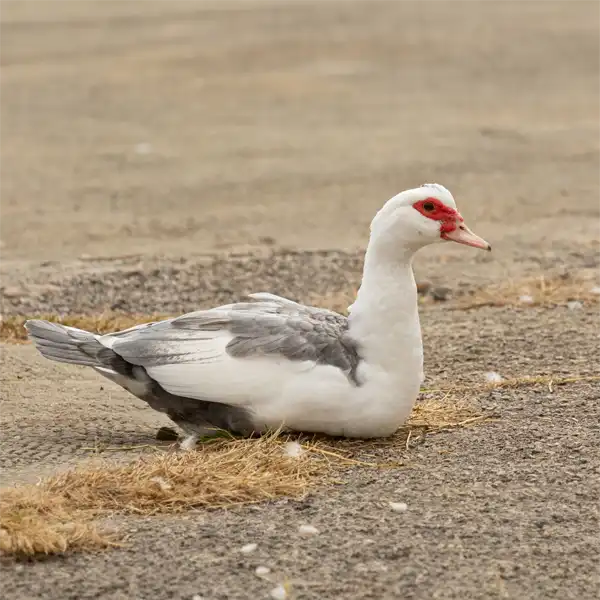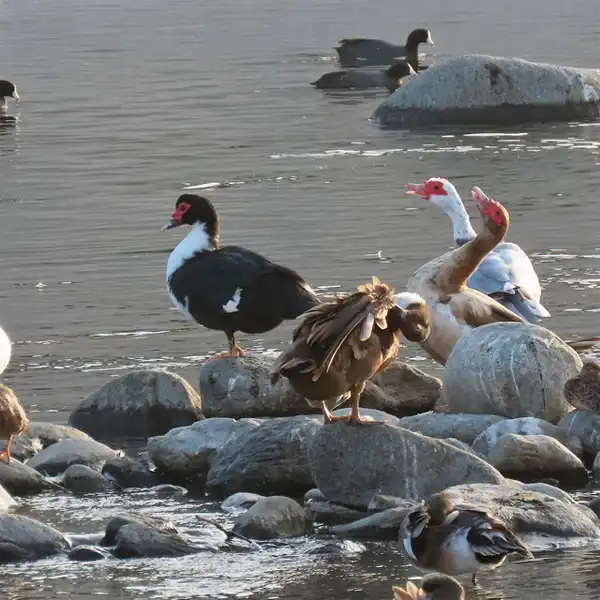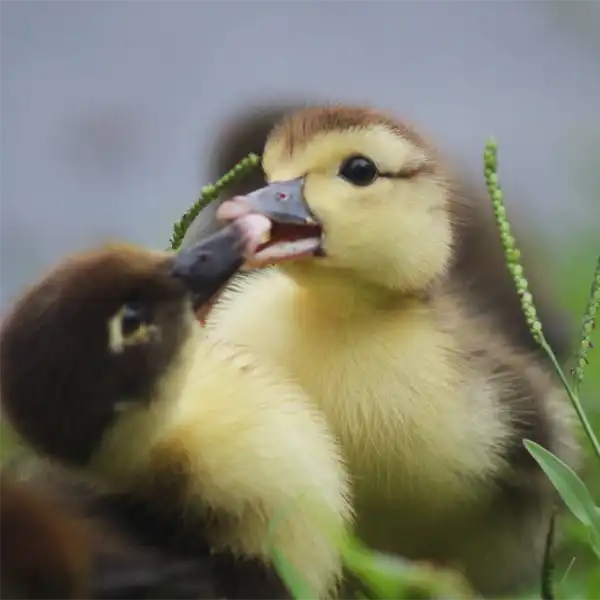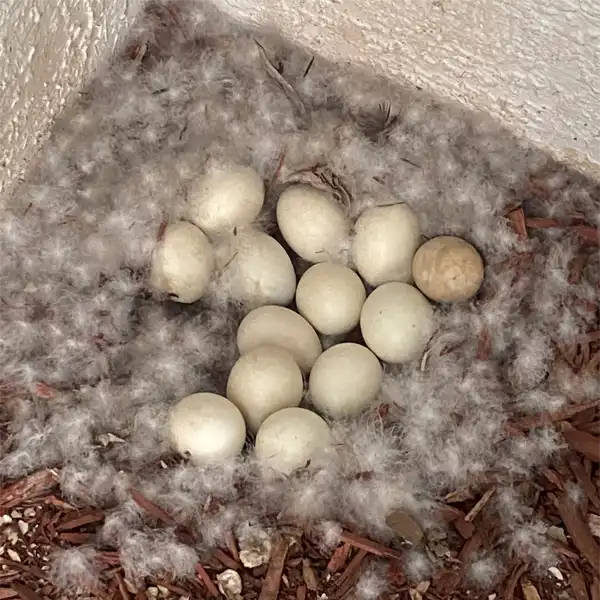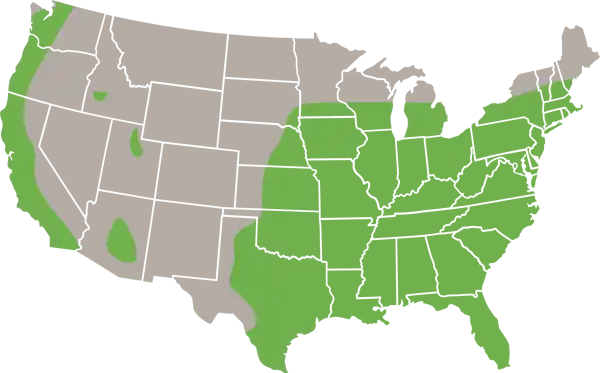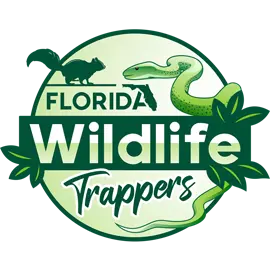Muscovy Duck
- Scientific Name
- Cairina moschata
- Also Known As
- Barbary Duck, Muscovy
- Range
- All of Florida
- Diet
- Plants, Grasses, Fish
- Life Expectancy
- 5 Years
Quick Links
American Crows in Central Florida
The muscovy duck (Cairina moschata) is a large waterfowl species that has become established in central Florida. Often seen perching in trees or nesting in urban areas, muscovy ducks stand out from mallards and other wild ducks.
This comprehensive guide provides detailed muscovy duck identification, biology, behavior, health risks, and management methods for central Florida.
Appearance and Identification
Muscovy ducks have distinctive features that aid in identification
Muscovy drakes hiss and puff out caruncles when aggressive. The rounded tail and pink bill distinguish them from native ducks.
Maturation Rate
Muscovy ducklings grow rapidly, reaching full adult size by 12 weeks old. They are able to fly at 10 weeks and become independent after 12 weeks. Muscovies molt old feathers and grow adult plumage by 6 months of age.
Habits and Behavior
Muscovy ducks live near water bodies like lakes, ponds, and slow moving rivers. However, they often perch in trees and nest in tree cavities or building openings. Muscovy ducks are social and gather in small flocks.
Muscovies walk and swim awkwardly but can fly well. Males are aggressive during breeding season. Muscovy ducks are mostly active during the day while spending nights roosting. They tolerate heat well but require shelter in winter.
Reproduction and Lifespan
Muscovy ducks reach sexual maturity by 7 months old. The breeding season runs from December to June in Florida. Females incubate a clutch of 8 to 16 eggs for 35 days before they hatch.
Muscovy ducklings follow the female closely for 10 to 12 weeks until fledging. Muscovies can live up to 10 years in captivity but average 5 years in the wild.
Ideal Habitat and Range
Central Florida’s humid, subtropical climate offers ideal habitat for muscovy ducks. Warm weather year round allows them to nest, hatch, and rear ducklings without winter die-offs.
Annual rainfall averages 50+ inches (1270+ mm), filling wetlands, rivers, lakes, and retention ponds. Muscovy ducks find ample water sources plus dense vegetation on banks for nesting and cover.
Urban areas provide man-made waterways, roosting sites on buildings, and foraging opportunities. Lack of harsh winters allows the population to grow rapidly. Abundant food from gardens, trash, and handouts sustains large numbers of muscovy ducks.
Diet and Feeding
Muscovy ducks are omnivores, feeding on plants, seeds, insects, fish, and small vertebrates. Their diet includes:
- Aquatic plants – duckweed, water lilies, hydrilla, algae.
- Insects – flies, mosquitoes, dragonflies, beetles.
- Fish – shad, sunfish, shiners, catfish.
- Snails, crustaceans – crayfish, shrimp, crabs.
- Reptiles – frogs, small snakes and turtles.
- Corn, rice, seeds, nuts, berries, leafy greens.
- Bread, popcorn, crackers from human handouts.
Muscovy ducks forage along shorelines and in shallow water. Males defend territories with reliable food sources. Muscovies feed throughout the day intermittently.
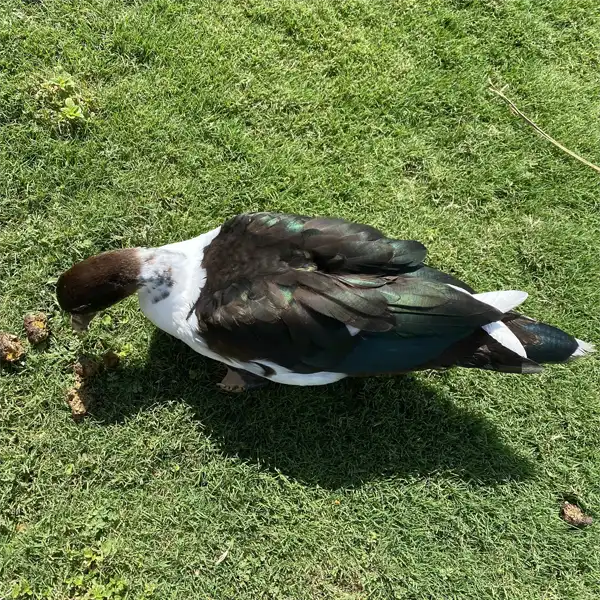
Photo 97312235 © ksjanite, CC BY-NC

Common Health Risks
Muscovy ducks can transmit certain infectious diseases to people, pets, and livestock:
- Salmonellosis – bacterial infection causing diarrhea, fever, and cramps. Spread through feces.
- Duck viral enteritis – contagious herpesvirus deadly to ducks, geese, and swans. Spreads by contact.
- Avian influenza – certain strains are zoonotic. Causes flu-like symptoms.
- Psittacosis – bacterial respiratory disease transmissible to humans.
- Histoplasmosis – fungal infection spread by dried droppings contaminated with spores.
- Cryptosporidiosis – protozoan parasite spread by feces. Causes diarrhea.
Muscovy droppings also create unsanitary conditions. Their feathers and dander can trigger allergic reactions in some people. Prompt removal and population control is advised where muscovy ducks congregate to reduce health hazards.
Preventing Muscovy Duck Infestations
Muscovy ducks seek access to structures for roosting and nesting. Block openings into attics, vents, porches, and balconies. Install mesh over drains and ponds to prevent access.
Discourage nesting near homes by removing dense vegetation and brush piles. Stop feeding ducks near residences to avoid attracting them.
Population control through egg addling, capturing adults, or lethal removal may be required to disperse entrenched flocks. Registered repellents, sprinklers, and noise deterrents can also be applied.
Muscovy Ducks in Central Florida – Conclusion
The warm climate and urban waterways of central Florida allow introduced muscovy ducks to thrive. However, they can create noise, droppings, damage, and health hazards when populations are not properly managed.
Early intervention to restrict access, modify habitat, and deter muscovies from settling is key. Ongoing population control, sanitation, and exclusion will be necessary to mitigate problems related to large concentrations of muscovies. Integrated muscovy duck management programs are advised to balance their aesthetic value against detrimental impacts.

